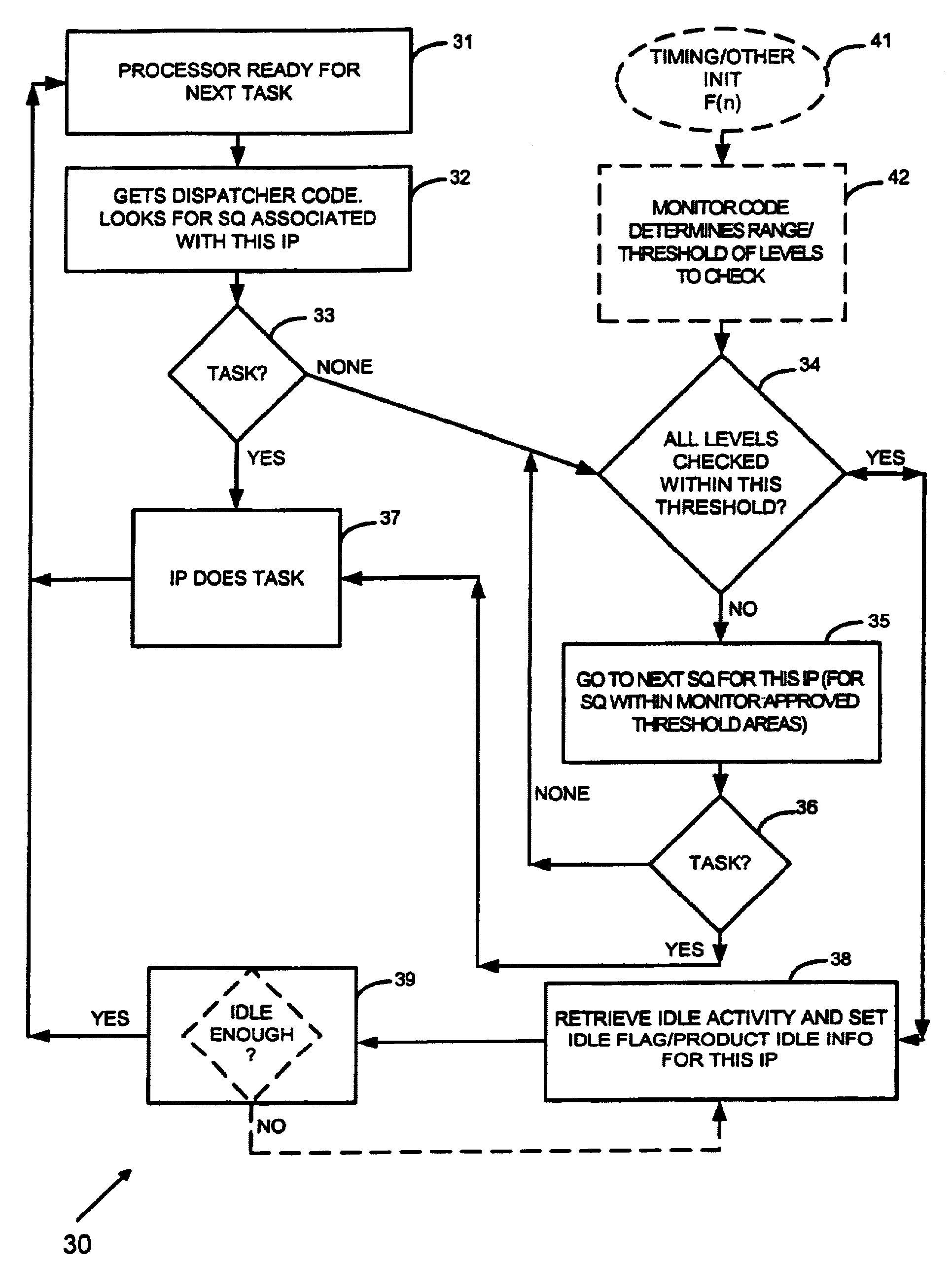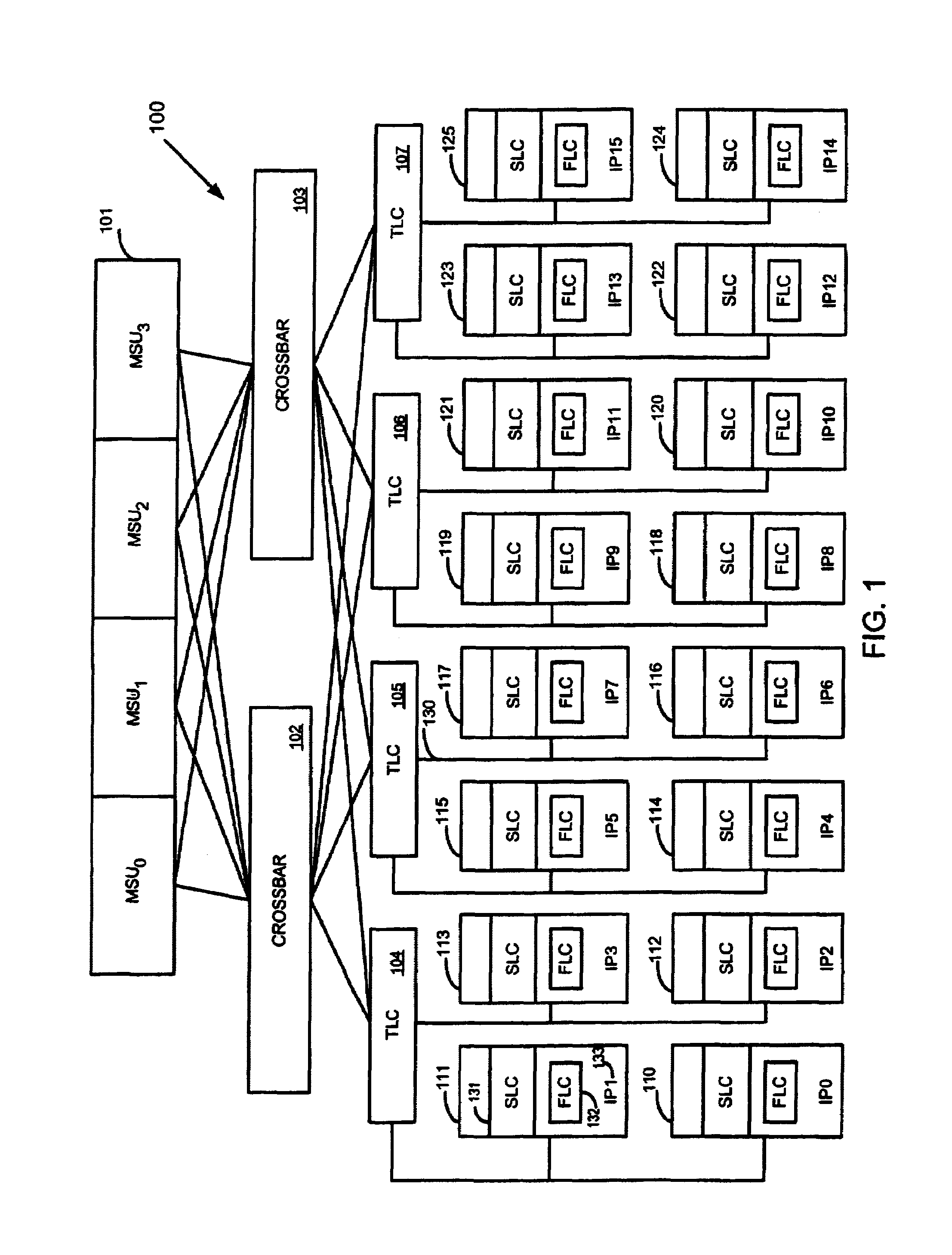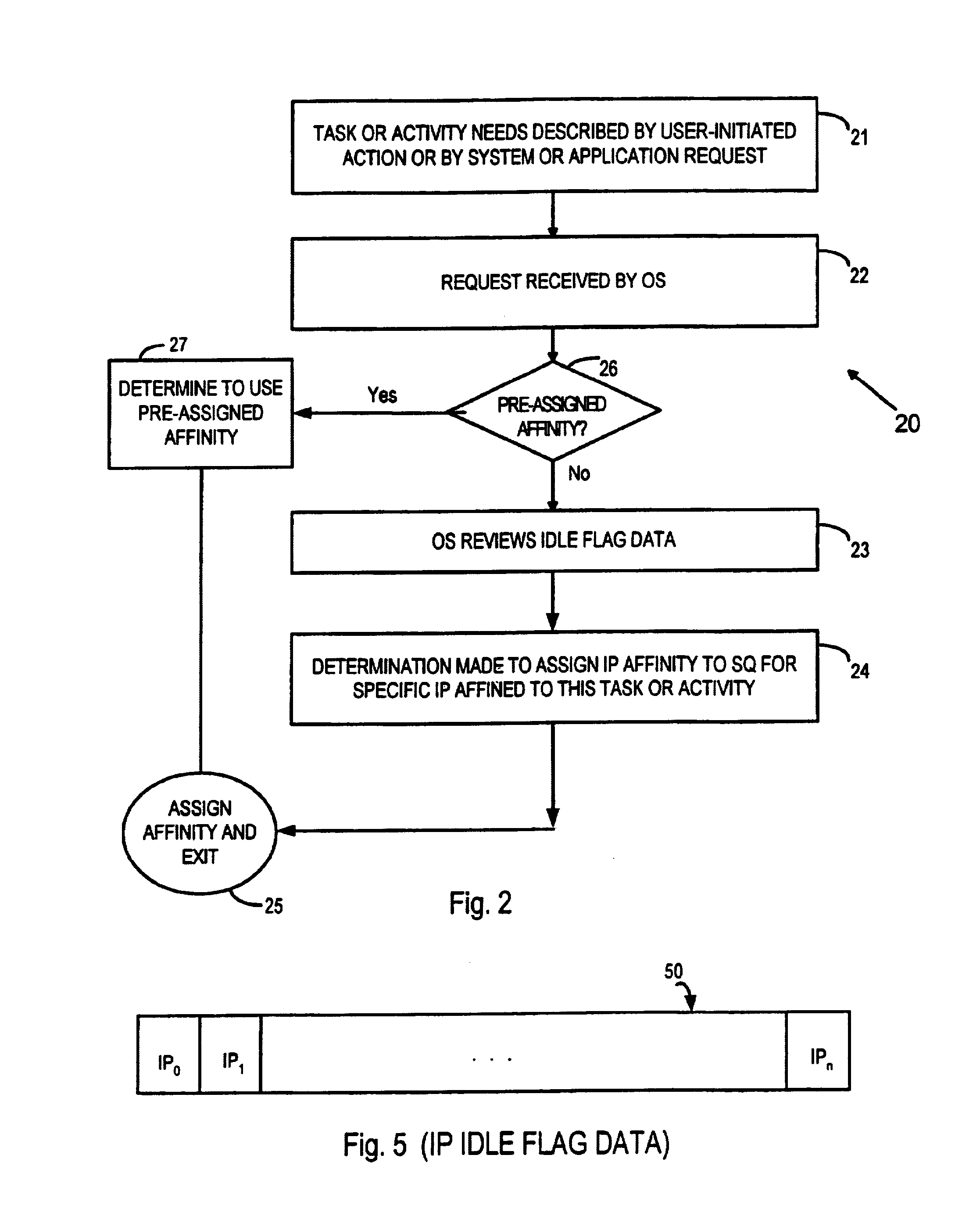Hierarchical affinity dispatcher for task management in a multiprocessor computer system
- Summary
- Abstract
- Description
- Claims
- Application Information
AI Technical Summary
Benefits of technology
Problems solved by technology
Method used
Image
Examples
Embodiment Construction
[0022]A multiprocessor computer system 100 which could take advantage of this invention is described in one form with reference to FIG. 1. Larger versions, which employ the invention, can be built in a modular manner using more groups of components similar to the ones shown but for purposes of this discussion a 16-processor version suffices. There is a central main memory 101 having a plurality of memory storage units MSU0-3. These can be configured to form a long contiguous area of memory or organized into many different arrangements as is understood in this industry. The MSUs are each connected to each of the two crossbars 102, 103, which in turn are connected to the highest level of cache in this exemplary system the Third Level Caches (TLCs) 104–107. These TLCs are shared cache areas for all the IPs underneath them. Data, instruction and other signals may traverse these connections similarly to a bus, but advantageously by direct connection through the crossbars in a well-known ...
PUM
 Login to View More
Login to View More Abstract
Description
Claims
Application Information
 Login to View More
Login to View More - R&D
- Intellectual Property
- Life Sciences
- Materials
- Tech Scout
- Unparalleled Data Quality
- Higher Quality Content
- 60% Fewer Hallucinations
Browse by: Latest US Patents, China's latest patents, Technical Efficacy Thesaurus, Application Domain, Technology Topic, Popular Technical Reports.
© 2025 PatSnap. All rights reserved.Legal|Privacy policy|Modern Slavery Act Transparency Statement|Sitemap|About US| Contact US: help@patsnap.com



